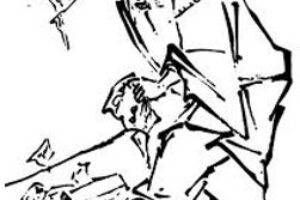Spring: Time To Wake Up! Step Off The Hundred-Foot Pole…(Dive To The Bottom)
Spring is the season when dormant life springs back. Notwithstanding Zen’s teachings on impermanence and change, periodic irritants like daylight savings time require us to “spring forward,” which really means that we lose an hour of sleep, assuming that we are still living on clock time. In Zen, waking up is equally relevant in any season, and at any time. One of the things we wake up to in zazen is real time, which is independent of any clock.
Needless to say, to literally step off the top of a hundred-foot pole, you first have to shinny up from the ground, without benefit of climbing spurs and halter belt. You can expect to slip back from time to time when you hit a slick spot, or to have to hold on for dear life when your strength flags. Needless to say, this is an apt metaphor for Zen practice.
“What Zen prescribes when we “live in interesting times” is consistent: Just sit. This is not a flip or uncaring dismissal of the unusual conditions we face in a pandemic.”
— ZENKAI TAIUN ELLISTON-ROSHI
While falling asleep, you may have felt the sensation of weightlessness, as if you have stumbled, and are free-falling through space, experiencing intense vertigo. This gives you an inkling of what stepping off the hundred-foot pole feels like. A telephone pole is about forty feet high, so we are talking precarious situation. Two and a half times that tall. Assuming the same thickness, that pole is going to be fairly unstable, especially with a heavy body perched on all fours on top. Lots of pendulum sway. Add in some wind, and you can just feel the queasiness.
Matsuoka Roshi would illustrate this jumping-off point by raising his hand, four fingers clustered together, representing your arms and legs perched at the very top. Then he would say, “One more step!” and instantly open is hand wide.
Sri Ramakrishna, a Hindu saint of the 1850s living in Calcutta, spoke of an “ocean of consciousness.” One of his students came in excitedly one day and said that he had seen the surface of the ocean, that he understood. The sage told him that he needed to dive

young follower said he was afraid he would die. Ramakrishna encouraged him, saying he would not die, as this is the ocean of consciousness. But he had to dive in, because the “jewels” are at the bottom.
There are many such poetic descriptions pointing to the nature of this transformative experience, from many different traditions. The Zen approach, at its core, is for you to “just do it.” But of course, it is beyond our doing. We have to allow it to happen.
At this time, the truth and method of Buddhism become ever more relevant. What Zen prescribes when we “live in interesting times” is consistent: Just sit. This is not a flip or uncaring dismissal of the unusual conditions we face in a pandemic. But it argues that we are always in a pandemic of sorts. Birth is the leading cause of death. This truth does not change with circumstance. We are constantly faced with death from the moment we are born, and even in the womb. “Birth is an expression complete this moment. Death is an expression complete this moment. They are like winter and spring. You do not call winter the beginning of spring nor death the end of spring” according to Master Dogen in “Genjokoan.” Welcome to spring.Zenkai Taiun Michael EliistonApril 6, 2020









